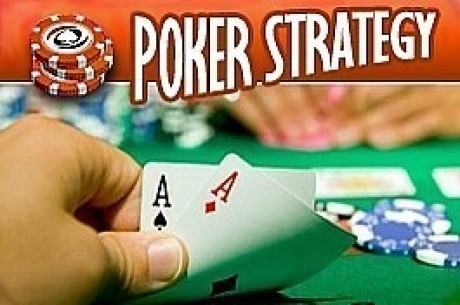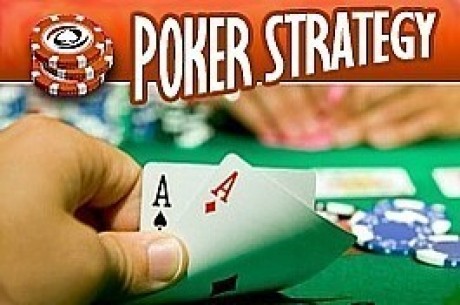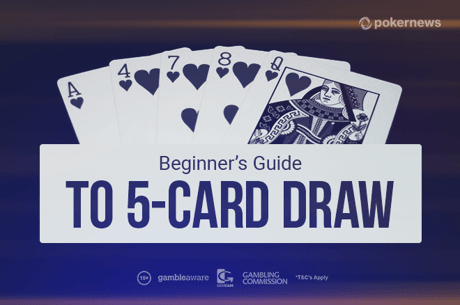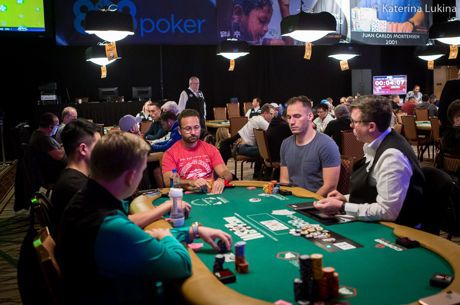Talking HORSE with Lou Krieger, Vol. 14: More Stud Starting Hands

Last time, we talked about the importance of starting hands in seven-card stud, and began our examination of starting hands at the very top of the heap. You begin atop that mountain when you��re dealt trips, but you can��t win at stud by simply waiting around for wired trips. That doesn��t happen very often, so we��ll have to examine other potential starting hands.
Big Pairs
A big pair �� tens or higher �� is usually playable and you usually ought to raise in order to make it too expensive for drawing hands to continue playing. While a single high pair is favored against any one opponent with a straight or a flush draw, it��s an underdog against two or more draws.
When it comes to pairs, it��s always better to have your pair hidden than to have one of your paired cards exposed. It��s much more deceptive. If your opponent can��t even see part of your pair he can��t assess the strength of your hand.
If fourth street pairs your exposed card and you come out swinging, your opponent has to consider that you might have three of a kind. This will probably put the kibosh on his aggression and limit the amount you can win. But if your pair is buried and fourth street gives you trips, your opponent won��t have a clue about the strength of your hand until you��ve trapped him for a raise or two.
Big pairs play best against one or two opponents and can sometimes win without improvement. But you��re really hoping to make at least two pair. If you are up against one or two opponents, your two pair will probably be the winning hand. Having said that, a word of caution is in order. It is critically important not to take your pair up against a bigger pair unless you have live side cards that are bigger than your opponent��s probable pair. For example, if you are dealt J?A?/ J?, and your opponent��s door card is Q?, her most likely hand is a pair of queens if she continues on in the hand.
As long as your ace is live, you can continue playing. After all, she might not have a pair of queens. She might have a pair of buried nines, in which case you are already in the lead. Even if she does have queens, you could catch an ace, another jack, or even a king. An ace gives you two pair that��s presumably bigger than your opponent��s hand, while trip jacks puts you firmly in the lead.
Even a live king on fourth street helps you by offering another way to make two pair that is bigger than your opponent��s. You��re probably behind at this point, but you still have a number of ways to win as long as the cards you need are live.
Small or Medium Pairs
Whether you have a pair of deuces or a bigger pair is not nearly as important as whether your side cards are higher in rank than your opponent��s pair. If you hold big, live side cards along with a small pair, your chances of winning are really a function of pairing one of those side cards �� and aces up always beats queens up, regardless of the rank of your second pair.
You��ll need to pair one of those big side cards to win. While a single pair of aces or kings can win a hand of stud, particularly when it��s contested heads-up, winning with a pair of deuces �� or any other small pair, for that matter �� is just this side of miraculous; it doesn��t happen very often.
Playing Lesser Hands
What about lesser hands? Should you get involved in a pot with a hand like J?7?/ K?? You��ve got two high cards, but no straight draw and no flush draw. All you really have is a bluffing opportunity if your king is the boss because no one else has a higher card showing. Playing a hand like this for value �� not for a bluff �� really depends on how you read your opponents and the range of playing hands you can put them on based on your observation of their starting standards. If you��re ahead of a lone opponent, you won��t be all that far ahead, and in essence this kind of hand is essentially a draw to a pair, which is a weak play, or a hand that can look good if you catch another big card and your opponent catches a small one.
Unless you have a valid reason to believe that a hand like this can be played for value, you should probably either fold it or play it as a bluff. And most of the time your decision ought to point you in the direction of folding.
Playing a Draw
If you have been dealt three cards of the same suit or three sequenced cards, job one is to see if your outs are live. If the cards you need are not already taken, you can usually go ahead and take another card off the deck.
If you see that your opponents have more than two of your suit, or three of the cards that can make a straight, you should fold. As long as your cards are live and you can see another card inexpensively, take another card. You might get lucky and catch a fourth card of your suit, or you could pair one of your big cards and have a couple of ways to win. Your flush could get back on track if the fifth card is suited, or you could improve to three of a kind or two big pair.
The allure of drawing hands is that they offer the promise of improving to very large hands. Skilled players are not easily seduced, however, and are armed with the discipline required to know when to release a drawing hand and wait for a better opportunity to invest their money.
The key to playing draws successfully is live cards. When the cards you need are live, the prize is usually worth the gain. If too many of your cards are unavailable, your chances of winning are diminished.
Bluffing opportunities abound in seven-card stud, and they occur throughout the play of the hand because with so many exposed cards, it��s easy to use strong cards exposed in your hand along with aggressive betting to paint a convincing picture of a really big hand.
You can even bluff successfully on third street, with only one card exposed. This usually occurs when an opponent brings it in, a few players fold, and now you��re sitting there with an ace exposed for all the world to see. A deft glance at the hands of opponents slated to act after you show nothing but smallish and mid-range cards. If you complete the bet here, you stand a good chance of forcing all of your opponents to fold. Unless one of them has an extremely strong hand, your opponents will have to consider the possibility that you have a pair of aces, and if they��re holding lesser hands, they��re far behind you. A straight or flush draw might call, but if those hands catch bricks on fourth street, there��s really no way they can profitably call if you bet out on the next round.
We��ll talk about other bluffing opportunities in seven-card stud in subsequent articles. But for now, this is the most common bluff on third street.
# # #
Lou Krieger is the editor of Poker Player Newspaper. He��s the author of more than 400 articles on poker strategy and 11 books on poker. He can also be heard on the internet radio show, ��Keep Flopping Aces�� which airs Thursday night at 9 p.m. Eastern Time (6 p.m. Pacific) on www.roundersradio.com.








